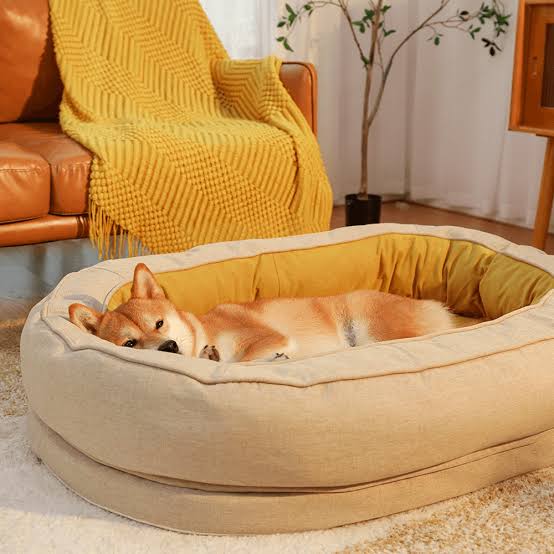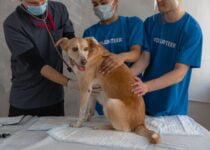How Does Bubble Theory Dog Training Works? (You Need To See This)

I don’t know if you guys noticed, but dog training has evolved over the years, and one of the innovative approaches gaining popularity is Bubble Theory Dog Training. This method focuses on understanding canine behavior and creating a safe “bubble” for your dogs to learn and thrive in.
We know that traditional dog training methods often rely on dominance and punishment, which can lead to stress and fear in dogs. Bubble Theory Dog Training takes a different approach, emphasizing positive reinforcement and creating a calm, supportive environment for learning.
In this Pawsitive Dog Training Guide, I will teach how Bubble Theory Dog Training works and its benefits in fostering a strong bond between you and your dog.
But before we continue, you may like to check out Pawsitive Dog Training: The Best Dog Training Brand in Fairbanks.
What is Bubble Theory Dog Training?
Bubble Theory Dog Training is a holistic approach that considers the dog’s emotional well-being and natural instincts during the training process. It recognizes that dogs have their own unique personalities and learning styles. The training revolves around the concept of creating a protective “bubble” around the dog, ensuring they feel secure and motivated to engage in training activities.
What Are the Benefits of Bubble Theory Dog Training?
Bubble Theory Dog Training offers a range of benefits for both dogs and their owners. By prioritizing positive reinforcement, clear communication, and creating a supportive environment, this training approach enhances the overall well-being and behavior of dogs. Let’s check out the benefits of Bubble Theory Dog Training in detail:
1. It Builds Strong Bond and Trust
Bubble Theory Dog Training emphasizes building a strong bond and trust between the dog and the trainer. Through positive reinforcement and consistent communication, dogs learn to trust their trainers, leading to a deeper connection and a more positive training experience. This bond forms the foundation for effective training and a harmonious relationship.
2. It Creates a Calm and Supportive Environment for Dogs
Bubble Theory Dog Training creates a calm and supportive environment for dogs, minimizing stress and anxiety. Traditional training methods that rely on punishment or dominance can induce fear and stress in dogs, hindering their learning process. But, Bubble Theory Training focuses on positive experiences and reinforcement, promoting a sense of security and reducing anxiety.
3. It helps to improve your Dog’s Behavior
Bubble Theory Dog Training shifts the focus from punishing unwanted behaviors to reinforcing desired ones. By rewarding and positively reinforcing good behavior, dogs learn what is expected of them. This approach encourages dogs to make better choices and exhibit improved behavior, leading to a more well-behaved and obedient dog.
4. It Enhances Mental Stimulation
Mental stimulation is crucial for a dog’s overall well-being and can help prevent boredom-related behaviors. Bubble Theory Dog Training incorporates interactive games, puzzles, and challenging exercises that engage the dog’s cognitive abilities. These mentally stimulating activities keep dogs engaged, sharp, and satisfied.
5. It Increases Adaptability and Socialization
Dogs trained using Bubble Theory methods develop adaptability to different situations, environments, and social interactions. By gradually exposing dogs to various environments, people, and animals, trainers help them become more confident and well-adjusted. This adaptability improves the dog’s overall behavior and enables them to navigate different scenarios with ease.
6. It Takes a Holistic Approach to Training
Bubble Theory Dog Training takes a holistic approach to dog training, considering the dog’s emotional well-being, natural instincts, and individual personality. This method respects the dog as an individual and seeks to understand their needs, resulting in a more positive and enjoyable training experience for both dog and trainer.
7. It Improves Positive Owner Experience
Bubble Theory Dog Training not only benefits the dog but also enhances the owner’s experience. By focusing on positive reinforcement and clear communication, owners feel more confident and effective in their training efforts. This positive experience fosters a stronger bond between the owner and their dog and encourages continued engagement in training activities.
What is a Reactive Dog?
A reactive dog refers to a dog that displays an intense or exaggerated response to certain triggers or stimuli in their environment. This reactivity is often rooted in fear, anxiety, or a sense of discomfort. Reactive dogs may exhibit behaviors such as barking, lunging, growling, or even aggressive posturing when faced with these triggers.
For instance, let’s say we have a reactive dog named Max. Whenever Max sees another dog while on a walk, he immediately starts barking, pulls on the leash, and displays signs of stress and agitation. This reaction may be triggered by a combination of fear, lack of socialization, and past negative experiences with other dogs.
In Bubble Theory Dog Training, the focus is on understanding and addressing the emotional state of the reactive dog. The training approach aims to create a calm and supportive environment, often referred to as a “bubble,” where the dog feels safe and can learn to manage their reactivity.
Using Bubble Theory techniques, Max’s owner starts by identifying the threshold distance at which Max remains relatively calm in the presence of another dog. They gradually introduce controlled exposures to other dogs from a distance that doesn’t trigger Max’s reactive behavior.
During these training sessions, Max’s owner utilizes positive reinforcement by rewarding him with treats, praise, or play whenever he displays calm behavior, such as remaining relaxed or redirecting his attention back to his owner. Over time, as Max becomes more comfortable, the distance between him and the trigger gradually decreases, further desensitizing him to the presence of other dogs.
The goal of Bubble Theory Dog Training with a reactive dog like Max is to help him develop better coping mechanisms, build confidence, and change his emotional response to triggers from fear or anxiety to a more relaxed state.
Related articles:
- What are the 5 Golden Rules of Dog Training?
- Does neutering a dog help with potty training?
- How to crate train a dog with separation anxiety
How To Use Bubble Theory Dog Training To Help a Reactive Dog
Using Bubble Theory Dog Training techniques can be highly beneficial for reactive dogs, helping them overcome their reactive behaviors and develop better coping mechanisms. Here’s how to use Bubble Theory Dog Training to assist a reactive dog:
- Understanding the Root Cause: Begin by understanding the underlying reasons behind your dog’s reactivity. It could be fear, insecurity, previous negative experiences, or a lack of socialization. Identifying the root cause helps you tailor the training approach to address your dog’s specific needs.
- Create a Safe Environment: Establish a calm and controlled training environment for your reactive dog. Minimize potential triggers and distractions that may provoke reactive behavior. Start training in a familiar, quiet space where your dog feels comfortable and secure.
- Counter Conditioning: Employ counter-conditioning techniques to change your dog’s emotional response to trigger stimuli. Start at a distance where your dog remains calm and gradually expose them to the trigger while providing positive reinforcement in the form of treats, praise, or play. The goal is to create a positive association with the trigger, replacing fear or aggression with positive emotions.
- Desensitization: Gradually expose your reactive dog to the trigger stimuli in a controlled manner. Begin at a distance where your dog remains relaxed, and then gradually decrease the distance over multiple sessions as your dog becomes more comfortable. This gradual exposure helps desensitize your dog to the triggers.
- Focus on Engagement: Teach your reactive dog to engage with you as a way to redirect their attention from the trigger. Use high-value treats or toys to capture their focus and reward them for maintaining eye contact or responding to your cues. This technique helps shift their attention away from the trigger and strengthens their bond with you.
- Positive Reinforcement: Utilize positive reinforcement to reward calm, non-reactive behavior. Whenever your dog displays relaxed behavior around triggers or successfully redirects their attention to you, provide immediate praise and rewards. Consistently reinforce the desired behavior to encourage repetition.
- Set Realistic Goals: Understand that progress with a reactive dog takes time and patience. Set realistic goals and focus on small achievements. Gradual improvements over time are more important than expecting immediate results. Celebrate each milestone and adapt the training approach based on your dog’s progress.
- Manage Trigger Situations: Take proactive steps to manage trigger situations while training your reactive dog. This may include keeping a safe distance from triggers, using visual barriers or a harness that signals “caution” to others, or choosing less crowded areas for walks. By managing triggers, you can minimize the likelihood of reactive episodes and maintain a positive training environment.
- Seek Professional Assistance: Consider working with a professional dog trainer or behaviorist who specializes in reactive dogs. They can provide tailored guidance, create a customized training plan, and help address specific challenges you may encounter along the way. Professional assistance can greatly enhance the effectiveness of your training efforts.
- Practice Patience and Consistency: Reactive dog training requires patience, consistency, and commitment. Be consistent with your training sessions and practice regularly. Understand that setbacks may occur and progress may not be linear. Stay patient, remain calm, and adapt your approach as needed to support your reactive dog’s progress.
Common Bubble Theory Dog Training Challenges and Solutions
While implementing Bubble Theory Dog Training, you may encounter some challenges. Here are a few common ones and their solutions:
- Distractions: If your dog gets easily distracted during training, consider starting in a quiet, controlled environment and gradually increasing the level of distractions as they progress.
- Fear or Anxiety: If your dog shows signs of fear or anxiety, create a more gradual training plan and introduce desensitization exercises to help them overcome their fears.
- Inconsistency: Consistency is crucial in Bubble Theory Dog Training. Ensure all family members are on the same page and follow the established training methods to avoid confusion for your dog.
- Lack of Motivation: If your dog seems disinterested or unmotivated during training, reassess the rewards you’re using. Experiment with different treats or toys to find what motivates them best.
Frequently Asked Questions On Bubble Theory Dog Training
How long does it take to see results with Bubble Theory Dog Training?
The timeline for seeing results with Bubble Theory Dog Training can vary depending on factors such as your dog’s age, breed, and previous training experiences. Some dogs may show improvements within a few weeks, while others may take longer. Consistency, patience, and positive reinforcement are key to achieving desired results.
Can Bubble Theory Dog Training be used for older dogs?
Absolutely! Bubble Theory Dog Training is suitable for dogs of all ages. While it may take more time and patience to train older dogs, the principles of positive reinforcement and clear communication can still be applied effectively. Older dogs can benefit from the mental stimulation and bond-building aspects of this training approach.
Are there any specific breeds that respond better to Bubble Theory Dog Training?
Bubble Theory Dog Training is not limited to specific breeds. It is a training approach that focuses on understanding canine behavior and using positive reinforcement techniques. Every dog is unique, so it’s important to tailor the training to your dog’s individual needs and learning style.
Can I combine Bubble Theory Dog Training with other training methods?
Yes, you can integrate Bubble Theory Dog Training principles with other positive reinforcement methods. It’s important to be consistent and avoid conflicting training techniques that may confuse your dog. Consult with a professional dog trainer if you need guidance on combining different training approaches.
Where can I learn more about Bubble Theory Dog Training?
There are various resources available to expand your knowledge of Bubble Theory Dog Training. You can consult books, online articles, and videos from reputable trainers who specialize in this approach. Additionally, reaching out to certified trainers or attending dog training classes that incorporate Bubble Theory principles can provide hands-on guidance and support.
What is the best dog training theory?
The best dog training theory is subjective and depends on individual preferences, training goals, and the specific needs of the dog. Different training theories and methods have their own merits and may be more suitable for certain dogs or training situations. Some popular dog training theories include positive reinforcement training, clicker training, dominance-based training, and operant conditioning.
What are the three keys to dog training?
The three keys to dog training are consistency, positive reinforcement, and patience. Consistency involves setting clear rules and expectations for your dog and ensuring they are consistently enforced. Positive reinforcement involves rewarding your dog for desired behaviors, using treats, praise, or play to motivate and encourage them. Patience is essential as dogs learn at different paces, and training takes time. By consistently applying positive reinforcement techniques with patience, you can effectively train and shape your dog’s behavior.
That’s it on Bubble Theory Dog Training. If you have a question, please don’t hesitate to ask me in the comment section or you can simply contact me for quick response. Don’t forget to share the post with your family and friends.


